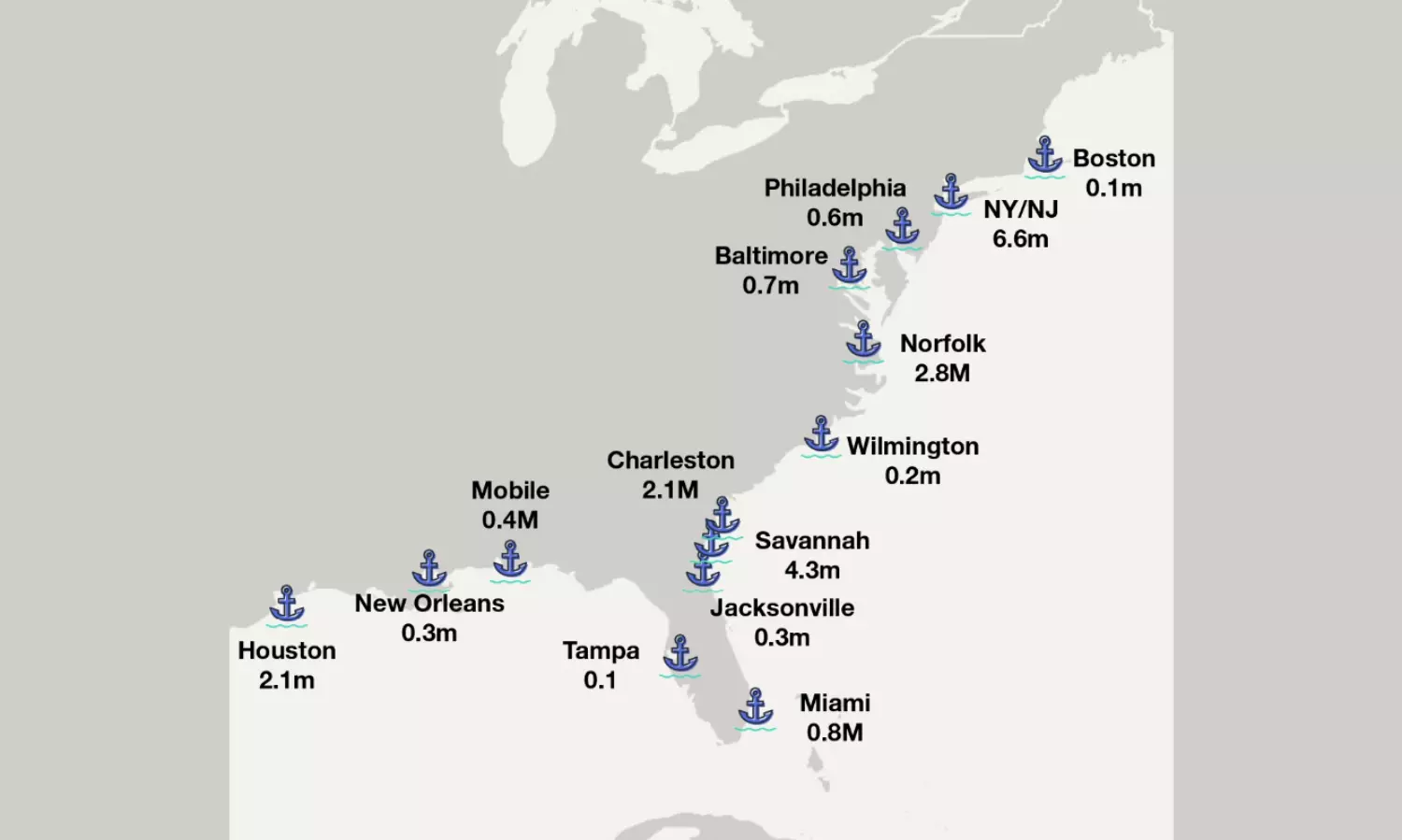Potential US port strike to create 5-10 days of backlog every day
This could create a domino effect across the global supply chain, causing backlogs, equipment shortages, and increased shipping costs.

With labour contracts between the International Longshoremen’s Association (ILA) and the United States Maritime Alliance (USMX) set to expire in September 2024, a potential strike could halt operations at U.S. East Coast and Gulf Coast ports, affect half of the US’ containerised imports and every day of a strike to cause a backlog upto ten days.
The strike could create a domino effect across the global supply chain, causing backlogs, equipment shortages, and increased shipping costs.
Nerijus Poskus, VP of Global Ocean Procurement at Flexport, cautioned that “Every day of a strike is expected to cause a backlog of five to ten days. And 10 days of backlog would take 70 days to return to normal,” during a webinar organised by Flexport on September 24, 2024, on the current state of ocean and air freight.
He also reminded that port congestion is already a huge driver for reducing global shipping capacity.
“Almost 10 percent or 3 million TEUs of current global capacity is being absorbed by congestion, mainly affected by the typhoon in Shanghai and Ningbo,” he said.
"That does not include any potential effects of an ILA strike. If that happens, that number would go way above 10 percent,” he added.
With recent shifts in carrier alliances, Poskus notes that the industry is preparing for an influx of capacity in 2025.
“Carriers like MSC and CMA CGM are slated to add a combined 2 million TEUs. However, the question is how will these carriers will manage the ships. We have to watch where will that capacity be deployed,” he said.
ILA is the largest union of maritime workers in North America, representing upwards of 85,000 longshoremen on the Atlantic and Gulf Coasts, Great Lakes, major U.S. rivers, Puerto Rico and Eastern Canada, and the Bahamas. USMX represents employers of the East and Gulf Coast longshore industry. Membership consists of container carriers, including the largest carriers and carrier alliances worldwide, all major marine terminal operators, and port associations representing each port on the East and Gulf Coasts.
Poskus emphasised the sheer scale of the East Coast and Gulf Coast ports' operations which handle around 600,000 TEUs (twenty-foot equivalent units) per week.
“The US East Coast has handled 8.2 million TEUs year to date or about 50 percent of all U.S. containerized imports,” he said.
Poskus further breaks down the impact of the potential strike by noting that it will vary depending on where you're importing from, on which routing you choose and your carrier’s dependency on these ports.
“It will also affect the future state of the market for your specific trade,” he added.
For example, US imports from the Caribbean or East Coast of South America are entirely routed through the East Coast.
“Your options would be extremely limited. As 95 percent of imports these are going through East or Gulf Coast ports, your ability to do anything different is extremely limited. And the downstream effects will last significantly longer,” he said.
Talking about other lanes, he added, “West Coast South America to the US is slightly less affected, but still, more than three-quarters of trade is travelling through East Coast and Gulf Coast ports. In Transpacific Eastbound, slightly less than half depends on East Coast ports, but it is the biggest trade lane into the US.”
The impact of a potential strike will also vary depending on the carrier you choose.
Poskus took the example of ZIM Integrated Shipping, which routes the majority of its transpacific imports through the East Coast.
“72 percent of US imports for ZIM is going through the East Coast. Assuming a strike, 72 percent of ZIM’s trade equipment is also stuck and will not come back to Asia on time,” he noted.
Poskus also noted the rising movements of e-commerce and the demand for faster and more reliable shipping solutions.
“Five to seven years ago, only two premium services existed from the transpacific to the US West Coast,” he explained. "Now, with the rise of e-commerce, the demand for premium, reliable services has surged."
"Southeast Asia is set to see the biggest demand for premium services, especially as consumers demand faster delivery times," he added.
He also offered recommendations which include diversifying carrier options, building carrier relationships, be thoughtful about the recent shifts in alliances and the demand for indexed contracts.
Originally published itln.in


